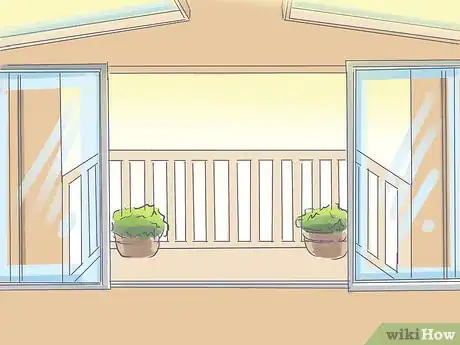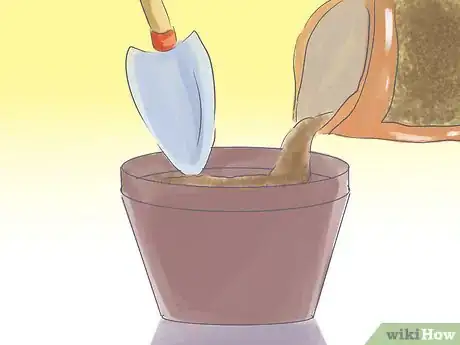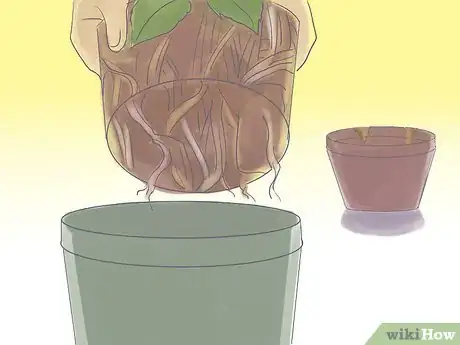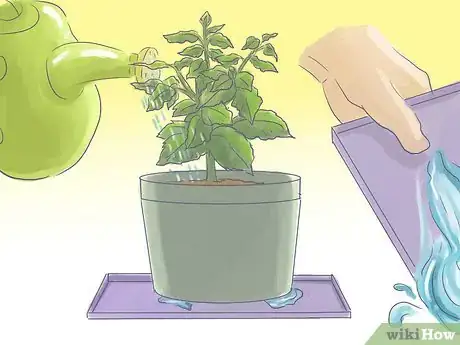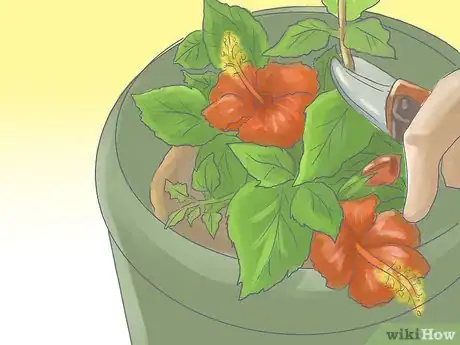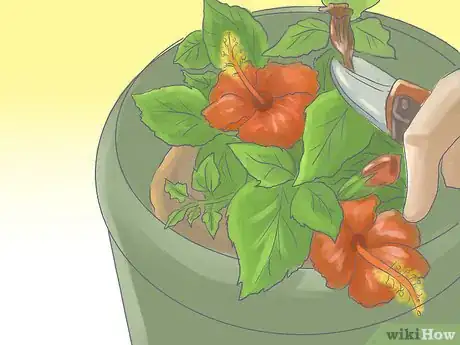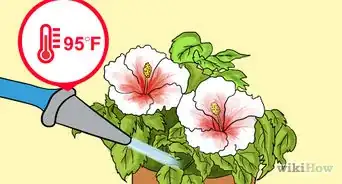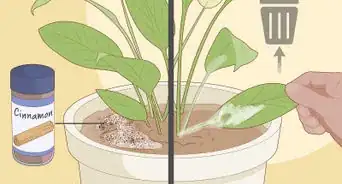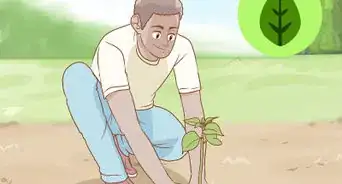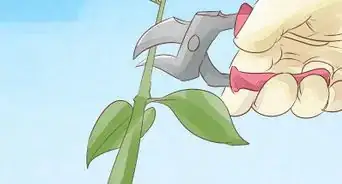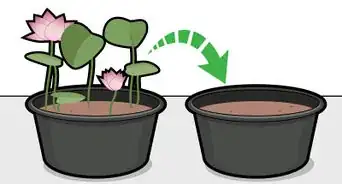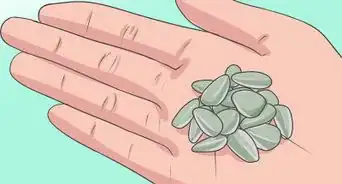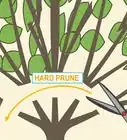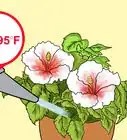This article was co-authored by Clark Hill. Clark Hill is a Plant Specialist and the Vice President of Operations at Platt Hill Nursery, a garden center and nursery based in the Chicagoland area of Illinois. Clark and the Platt Hill Nursery plant experts are committed to educating others about plants and providing advice to plant owners. Platt Hill Nursery aims to make gardening an easy and sustainable activity for everybody.
There are 10 references cited in this article, which can be found at the bottom of the page.
wikiHow marks an article as reader-approved once it receives enough positive feedback. In this case, 100% of readers who voted found the article helpful, earning it our reader-approved status.
This article has been viewed 45,439 times.
The Chinese hibiscus (Rosa sinensis) has flowers that look similar to the hibiscus that is commonly grown in gardens. Chinese hibiscus makes a stunning blooming houseplant with its 4” to 5” (10 to 12 cm) flowers in many gorgeous colors. A happy, healthy hibiscus will reward you with a constant succession of these flowers. Here is how to keep that hibiscus happy.
Steps
-
1Give Chinese hibiscus lots of light. A southern window or sunroom location is the best choice.[1]
-
2Keep Chinese hibiscus warm. These plants require temperatures between 55º to 85ºF (12.7 to 29.4ºC).[2]Advertisement
-
3Plant Chinese hibiscus in a lightweight potting soil, not garden soil.[3]
-
4Re-pot Chinese hibiscus each spring in new potting soil. Use a bigger pot if the plant appears root bound.
-
5Keep the soil in the pot moist at all times but never let the pot sit in water or become too soggy.[4]
- Use distilled water or rainwater at room temperature.
- Add water to the pot until water flows from the bottom.
- Empty saucers beneath the plant as soon as the water stops draining out.
- Touch the top of the potting soil to know if the plant needs water. Don’t rely on a schedule to water, water when the soil feels dry to the touch.
-
6Keep humidity around the plant high. 50-60 % relative room humidity is ideal.[5]
-
7Keep Chinese hibiscus out of drafts from opening doors, leaky windows or forced air vents.
-
8Fertilize Chinese hibiscus regularly all year round.
- Use a flowering plant, water-soluble fertilizer mixed according to directions for indoor plants, once a month.
- Or use a granular, slow release fertilizer for flowering houseplants as the label directs.
- Wait to begin fertilization for 3 months if the potting soil you use has fertilizer included.
-
9Prune hibiscus to keep it from getting too large and to encourage fullness.[6]
- Tip each tall, upright branch when you re-pot in spring to encourage side growth and fullness. Using bypass garden pruning shears cut each branch back to the second leaf node from the tip. Cut just before the node.[7]
- You can prune back to just before any leaf node to reduce the height or width of the hibiscus. Make sure to leave 2 to 3 leaf nodes on each stem or remove the stem completely.
-
10Groom your hibiscus.[8]
- Remove dead blooms promptly.
- Remove yellowed or dead leaves.
- Dust the leaves if they appear dusty.
- Prune dead branches.
-
11
Community Q&A
-
QuestionCan I save my rosa-sinensis if it is losing leaves from too much water?
 Community AnswerYes. Drill holes in the pot if it doesn't have them, and be more conservative in future watering.
Community AnswerYes. Drill holes in the pot if it doesn't have them, and be more conservative in future watering. -
QuestionMy hibiscus is an inside plant. Is it necessary to wait until spring to prune, or can I prune now?
 Community AnswerDuring autumn and winter, plants rest; in spring, they recover. My suggestion is to wait until spring, when the plant is completely ready to grow and recover.
Community AnswerDuring autumn and winter, plants rest; in spring, they recover. My suggestion is to wait until spring, when the plant is completely ready to grow and recover. -
QuestionWhy do the flower buds keep dropping off before they can bloom in my hibiscus plant?
 Community AnswerSpray your plants with Neem Oil. You can find it at your local home improvement store in the garden center.
Community AnswerSpray your plants with Neem Oil. You can find it at your local home improvement store in the garden center.
Things You’ll Need
- Fertilizer for blooming plants
- Pruning shears
References
- ↑ https://youhadmeatgardening.com/hibiscus-care-guide/
- ↑ https://www.nytimes.com/1985/11/17/arts/chinese-hibiscus-is-easy-to-grow-just-follow-the-rules.html
- ↑ https://aggie-horticulture.tamu.edu/newsletters/hortupdate/hortupdate_archives/2002/jun02/art1jun.html
- ↑ Clark Hill. Plant Specialist & VP of Operations, Platt Hill Nursery.
- ↑ https://laidbackgardener.blog/2017/01/13/the-secrets-to-growing-hibiscus-indoors/
- ↑ http://hibiscus-sinensis.com/care.html
- ↑ Clark Hill. Plant Specialist & VP of Operations, Platt Hill Nursery.
- ↑ https://floristics.info/en/houseplants/3340-china-rose-care-and-growing-from-seeds.html
- ↑ https://www.theflowerexpert.com/content/aboutflowers/tropicalflowers/china-rose
- ↑ Clark Hill. Plant Specialist & VP of Operations, Platt Hill Nursery.
- Ortho books, Houseplants Indoors/Outdoors, San Francisco, CA, Chevron, 1974, pg 54-55
- Hessayon, Dr.D.G., The Houseplant Expert, London, England, Expert Books, 1994, pg. 158
